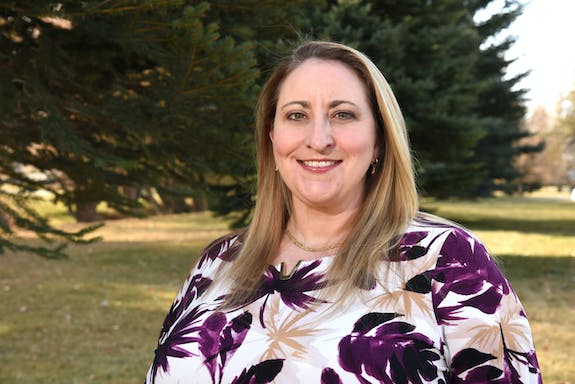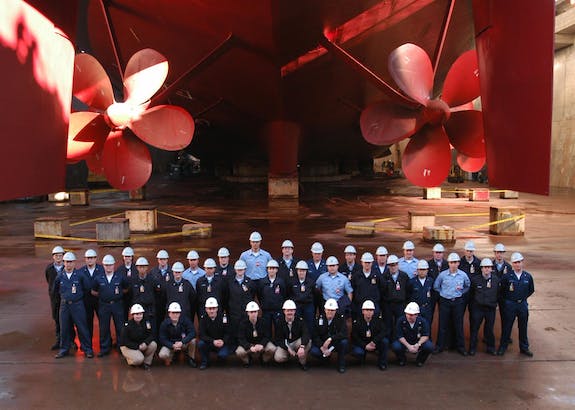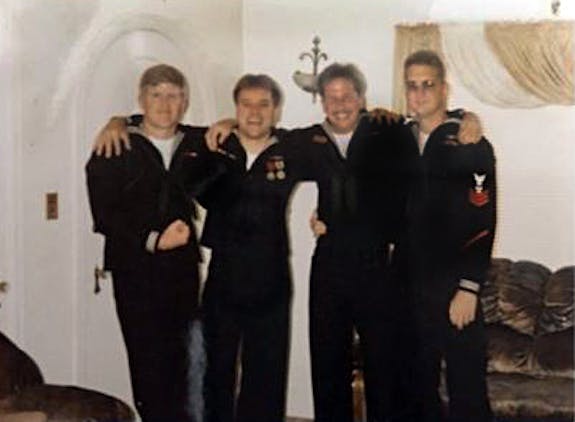Nov. 11 is a special day across our nation. Every year, on what once was known as Armistice Day, Americans observe a federal holiday on which, as former President Ronald Reagan said, “We remember those who were called upon to give all a person can give.”
At Idaho National Laboratory, Veterans Day takes on an even greater importance. INL manufactures tank armor to keep military personnel safe from harm, and conducts important research for the U.S. Navy, Department of Defense, and Department of Homeland Security.
Hundreds of military veterans work at INL making up 9.81% of the workforce. We’re far exceeding the Office of Federal Contract Compliance Programs’ hiring benchmark for military veterans of 5.7%. Veterans are also strongly represented in our leadership team, including 23.5% of INL’s executive leadership team. Further, 206 employees are members of INL’s Veterans and People with Disabilities Leadership Council and membership is constantly growing.
“Military veterans have played a significant role throughout INL’s history and continue to do so today,” INL Director Dr. Mark Peters said. “I am so grateful to our veterans for their contributions to our laboratory and for their service to our nation.”
INL veterans have many stories to tell. Here are two:
‘It got serious fast’

Mary Schwem took an interesting route to INL’s Advanced Test Reactor (ATR).
A self-described “Air Force brat,” Schwem was born on Kadena Air Force Base in Okinawa, Japan.
Her family moved frequently before settling in Cheyenne, Wyoming, where Schwem graduated from high school.
A Navy scholarship put Schwem through the University of Pennsylvania, where she earned a chemistry degree, in part because of her affinity for math and science, but also because of advice from the Navy adviser, who told her, “I have the thing for you, nuclear power.”
Schwem’s Navy career took her to the USS David R. Ray, where she worked on the destroyer’s defense weapons systems team.
In the early 2000s, Schwem found herself on the USS Abraham Lincoln, a nuclear-powered aircraft carrier, overseeing electrical work in one of its nuclear power plants.

Heading home toward the end of a six-month deployment in the Arabian Gulf, Schwem and her crewmates received an unexpected message from the carrier’s admiral, who announced to his crew:
“We’re turning around and we’re going to go defend our country,” Schwem recalled.
For the next four months, Schwem was a part of Operation Iraqi Freedom, including an historic moment, in May 2003, when President George W. Bush visited the carrier to declare its “Mission Accomplished.”
The Lincoln played a key role in Operations Southern Watch and Iraqi Freedom. This was the time of journalists embedded with U.S. military units and Schwem recalls the surreal experience of hearing planes take off from the carrier deck, then watching it on CNN.
Surreal became sobering, Schwem said, when you realized that these planes took off fully loaded with ammunition and returned empty.
“It got serious fast,” she said.
Following her eight-year Naval service, Schwem looked for work in the nuclear energy industry. Wanting to remain close to her family in Cheyenne, a friend recommended that Schwem consider INL.
Schwem applied, was hired at ATR, and never looked back.
In 2007, she began as an experiment operator. Over the years, Schwem worked her way up through the ranks, eventually becoming the first female to run a crew at the reactor.
In January 2019, however, Schwem decided she needed a change. For nearly two decades, in the Navy and at ATR, she had done shift work, a life filled with strange hours and disrupted sleep patterns.
Today, Schwem is an outage scheduler at ATR as part of the Production Control Team.
“For the first time in my entire life, I have a regular schedule and it’s awesome,” she said.
Schwem said her military service gave her many traits and skills that helped her succeed at INL: an appreciation for promptness, accountability, and preparation, as well as experience obtaining qualifications, something someone coming directly out of college may not possess.
“That really helps veterans at ATR,” Schwem said. “It’s not so much of a culture shock for us.”
A family tradition

Military service is a tradition in the Papaioannou family.
Eric Papaioannou, division director over maintenance, infrastructure, and fabrication at INL’s Materials and Fuels Complex (MFC), was raised by a father who served in the U.S. Army, and a mother who valued service to our country.
Papaioannou’s brother followed their father into the Army and recently retired after 24 years, as a lieutenant colonel.
Papaioannou’s grandfather, William Keenan, served in the U.S. Navy during World War II, taking part in many historic conflicts in the Pacific Theater.
And so, after graduating from high school, working construction, spending a year in college, and still not knowing what he wanted to do with his life, Papaioannou took the familiar family route. He joined the Navy as a trainee in the Nuclear Power Program.
In early 1986, Papaioannou completed boot camp at Recruit Training Command, Great Lakes, Illinois.
He spent a year at the Navy Nuclear Power School and trained in Idaho at the Nuclear Power Training Unit (NPTU), qualifying on the S1W USS Nautilus prototype.
During prototype training, Papaioannou met his wife, Robin. They were married a year later while he was serving aboard the USS Abraham Lincoln as a machinist mate, helping take the ship from the new construction phase through reactor testing, steam plant testing, and sea trials, basically preparing it for service to the nation.
“We really put that ship through its paces during sea trials,” Papaioannou said.
Following three years on the Lincoln, Papaioannou transferred to NPTU Idaho, where he spent the next four years as an instructor on the A1W USS Enterprise reactor prototype.

Papaioannou’s father-in-law, Jack Crose, shared his rank in the Navy, machinist mate first class, and was a graduate of the first nuclear training class held at NPTU Idaho.
The two men shared another connection. In the Navy, “plank owners” are members of a ship’s crew when it was placed in commission. Papaioannou is a plank owner of the USS Abe Lincoln and Crose, who died in 2013, was a plank owner of the USS Long Beach.
There was one more connection. After leaving the Navy, Crose spent 40 years at Argonne National Laboratory-West working as a reactor operator at EBR-II.
By May 1995, Papaioannou had left the Navy and started his own construction business with the goal of supporting his family, which now included two daughters, and putting himself through college.
Graduating with a degree in physics – with an emphasis in health physics – from Idaho State University, Papaioannou got a job at MFC. That was 1998.
Over the last 22 years, Papaioannou worked his way up the MFC ladder. He ran operations at MFC for a decade and today oversees maintenance and infrastructure, as well as the fabrication shop.
That is an enormous task, with MFC containing 28 nuclear facilities, roughly 70 buildings, and all the necessary infrastructure support systems.
“It’s like a small city,” Papaioannou said.
Papaioannou credits much of his success to the strong work ethic imparted by his parents and the fundamentals of disciplined operations that he took from the Navy’s nuclear program.
“The military gave me opportunities and responsibilities as a young person that shaped me and helped me grow up very quickly,” Papaioannou said.
Today, Papaioannou’s daughters are grown and enjoying successful careers. He and Robin, an elementary school teacher, have been married 32 years. His golf handicap is single digits. That is pretty good for a kid from New England who was not sure what he wanted to do with his life.
“I loved my time in the Navy and I’ve loved working at INL,” Papaioannou said. “It couldn’t have turned out better for me.”





